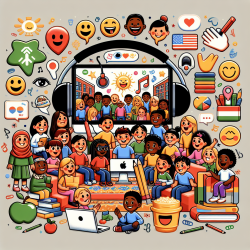Introduction
In the realm of speech-language pathology, the integration of technology is not just a trend but a necessity. The systematic review titled "Investigating Socially Assistive Systems from System Design and Evaluation" sheds light on the potential of socially assistive systems to enhance therapy outcomes, particularly for children. This blog will explore the key findings of the review and how practitioners can leverage these insights to improve their therapeutic approaches.
Understanding Socially Assistive Systems
Socially assistive systems (SAS) are designed to support individuals in social interactions, particularly those with disabilities or older adults. The review identified 11 types of Human-Computer Interaction (HCI) technologies that facilitate social interactions. Among these, cognitive and meaning understanding technologies, often paired with wearable devices, are the most prevalent. These technologies compensate for sensory losses and enhance communication, making them invaluable in therapy settings.
Key Findings from the Review
- HCI Technologies: Cognitive and meaning understanding technologies are widely used, often with wearable devices to aid sensory perception.
- User Involvement: About 33.85% of studies involved end-users in the design phase, emphasizing the importance of user-centered and participatory design approaches.
- Evaluation Methods: The review categorized evaluations into laboratory experiments and field studies, with 42.46% conducted in real-world settings like homes and institutions.
Implications for Practitioners
For practitioners, the integration of socially assistive systems into therapy can lead to significant improvements in outcomes. By adopting user-centered design approaches, therapists can ensure that the technologies are tailored to the specific needs of their clients. Furthermore, field evaluations provide valuable insights into the real-world applicability of these systems, allowing for continuous refinement and adaptation.
Future Directions
The review highlights emerging technologies such as Virtual Reality (VR) and Augmented Reality (AR) as promising areas for future research. These technologies offer immersive experiences that can further enhance social interactions and therapeutic outcomes. Practitioners are encouraged to stay abreast of these developments and consider their potential applications in therapy.
Conclusion
Incorporating socially assistive systems into therapy offers a data-driven approach to improving outcomes for children. By leveraging the latest HCI technologies and evaluation methods, practitioners can enhance social interactions and communication skills in their clients. As the field continues to evolve, staying informed and adaptable will be key to achieving the best possible outcomes.
To read the original research paper, please follow this link: Investigating socially assistive systems from system design and evaluation: a systematic review.










